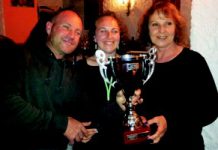
Spain has always been famous for its bull-fights which are undergoing a new lease of life after an increase in interest. In Spain the bullfight is called the Fiesta Nacional (The National Sport).
There are few places in Spain where a bullring cannot be found within a short drive. It is the thing most commonly associated with Spain, and rightly so, for its origins date back to 711AD when the first bull-fight (corrida) took place in honour of the crowning of King Alfons VIII. Every week, all over Spain, many thousands of Spaniards flock to the nearest bullring, but not all Spaniards agree with the sport, or, indeed, like it.
It is reported that each year, within Spain, 24,000 bulls are killed in front of an audience of 30 million people. The bullfighting season runs from March to October.
Bullfighting was originally a sport for the aristocracy and took place on horseback. King Felipe V took exception to the sport however, and banned the aristocracy from taking part, believing it to be a bad example to the public. After the ban, commoners accepted the sport as their own and, since they could not afford horses, developed the practice of dodging the bulls on foot, unarmed. This transformation occurred around 1724.
Summary of a Ball Fight
Firstly the bull is let into the ring. Then, the top bullfighter called the Matador, watches his chief assistant wave a bright yellow and magenta cape in front of the bull to make it charge. He watches in order to determine the bull’s qualities and mood, before taking over himself.Then a trumpet is sounded and several fighters called Picadores weaken the bull by placing spears into it. This takes around 10 minutes.
Another trumpet is sounded and the Matador now removes his black winged hat and dedicates the death of the bull to the president or the crowd before beginning his faena.
The faena which is the most beautiful and skilful section of the fight and where the matador must prove his courage and artistry. The faena consists of the bull running at the Matador who is carrying a muleta. This is a piece of thick crimson cloth draped over a short stick, which can be held in either the left hand or draped over the espada, the killing sword, which is always held in the right hand. Usually the muleta, in left or right hand, is first held in front of the matador to make the bull charge and is then swung across and away from the matador’s body hopefully taking the bull with it.
This is a show, basically a dance with death – one wrong move and the Matador could become impaled on the horns of the bull. It is the Matador’s job to make this dance dramatic and enjoyable for the audience.
The faena continues until the Matador has demonstrated his superiority over the bull. Once this is achieved the bull is ready to be killed.
The matador stands some ten feet from the bull, keeping the bull fixated on the muleta and aims the espada between the shoulder blades. The matador attacks, pushing the espada over the horns and deep between the shoulder blades. If the sword goes into the hilt it is an estocada but if it hits bone it is a pinchazo or media-estocada. An estocada usually results in the bull dropping immediately to its knees and dying, but if the bull fails to die the matador may take the descabello (a sword with a short cross piece at the end) which he stabs into the bull’s neck severing the spinal cord. The fight is over.
The matador may be awarded trophies by the president, according to his skill in working with the bull, which can be one or two ears from the bull, the tail and the hoof. The crowd will often encourage the president to award the trophies by waving white handkerchiefs, and this waving continues after the trophies have been awarded in an attempt to get the matador to throw his trophies into the crowd. The crowd in return hurls flowers which are collected by the matador’s assistants






















